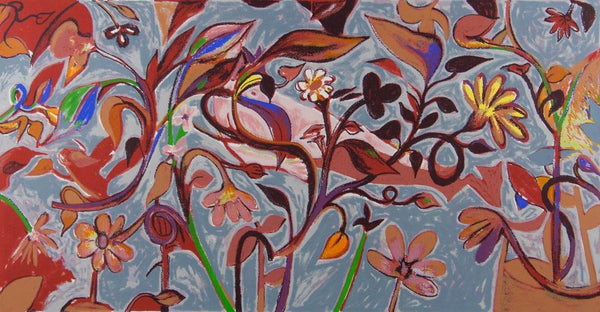Wabi sabi: Imperfect perfection
Walking along the shoreline, your path is abruptly interrupted by a tree. It is gnarled, its roots gripping the land like fingers, trunk twisting to face the sun, algae bespattering its skin, clotting around its knuckles. What are we to think of this tree? Is it ugly and obtrusive, or something else? Do we turn back or behold it, shifting our course to leave space for its sprawl?
According to the Japanese philosophy of wabi sabi, this wizened tree is beautiful – not in spite of its imperfections, but because of them. Evading direct translation, wabi sabi is a way of thinking-cum-design philosophy that is grounded in authenticity, simplicity and the incomplete. It pays heed to the effects of time, mystery and finding meaning in the undulating hand of nature.

As the world moves through a period of profound uncertainty, many find stability in wabi sabi. By inviting it into their homes, it promises something healing.
The art of imperfection
At its core, wabi sabi is about embracing imperfection. In terms of interior design, this can translate to timeworn objects, uneven and natural textures and surfaces, moments of aesthetic incongruity, and old alongside new homewares. Mess is accepted, as are the factors (dogs, cats, children, gusts of winds, rambunctious dinner parties, late nights, pillow forts, cake batter) that inhibit order.
On a more philosophical level, to embrace imperfection is to accept life. Scars will inevitably breach your skin, plans will fold and relationships will shift in and out of focus. Very little is actually perfect, except imperfection itself.

In the incomplete or imperfect, imagination has space to play. This notion is embodied by the artistic medium of the monotype which, discovered through serendipity, allows for more chance than other printmaking techniques. Rather than distinct bodies of work, the monotype exists more commonly in an artist’s oeuvre as a diversion – a way for them to experiment, hone their style and break new ground.

Jeffrey Makin, 'The Pinnacles'
In the incomplete or imperfect, imagination has space to play. This notion is embodied by the artistic medium of the monotype which, discovered through serendipity, allows for more chance than other printmaking techniques. Rather than distinct bodies of work, the monotype exists more commonly in an artist’s oeuvre as a diversion – a way for them to experiment, hone their style and break new ground.
By the grace of time
Wabi sabi is also attuned to the movement of time. Rather than perceiving aging as a negative, it’s reconceptualized as story. Further, time is also understood as bound to mortality – something that makes the impermanence of beauty, constellated by life and death, more profound.
Under Taoism, the spirituality that birthed wabi sabi, perfection is akin to death since it sees no place for further growth or development. It is a cul-de-sac, amputated from the joys of change, growth and aging.

Let’s return to our tree. Bearing the lessons of wabi sabi in mind, this tree is no obstruction. It is no eye-sore, nor monument; but rather an extension of us. Strange, enriched by time and warping to find the sun, it is an incarnation of life. The algae that smears across its torso is not a sign of quiescence, but of fusing with the ecosystem. Wabi sabi negates dualism – the belief that we are separate from our surroundings – in favour of unity.
It is no wonder that Japan, where frequent natural disasters strike, are the originators of wabi sabi. They have been compelled by the power of nature into acceptance. Not only this, but Japanese culture finds beauty in this acceptance, meaning, poetry and the profound. When asked to elaborate, those that cry wabi sabi respond muri! (Impossible!)

